Fieldwork I and Fieldwork II (2009)
Fieldwork I and Fieldwork II continue my longstanding interest in the relationship between the still and moving image. As with earlier works, Stati d'Animo (2005-07) and Aqua (2007, time and duration come into play in different ways.
This work draws on associations between diverse locations through a framework of time governed by myths and legends, losses and absences. I am drawn to these particular locations because they resonate with some of the central challenges of contemporary life, such as the workable coexistence between people, technology and the environment.
Fieldwork II (Chernobyl)
Merilyn Fairskye, 2009 HDV, duration 100:00, colour, silent
A 100-minute tracking shot, made with a small camera through the window of a moving car, takes you into a bleak, winter landscape, littered with deserted villages engulfed by trees. A long row of ghostly, abandoned houses stands on snow-covered ground. Further along the road other houses are buried under a thick layer of clay. You learn only from the title where this place is. Moving footage is time-stretched to the point where the image, on the verge of disintegration, is almost stilled.
Fieldwork I (Echo Point, Giza, Pripyat)
Three-channel video installation, 3 custom screens, 168 x 300cm.
Colour, stereo sound. Duration: 6 minute loop.
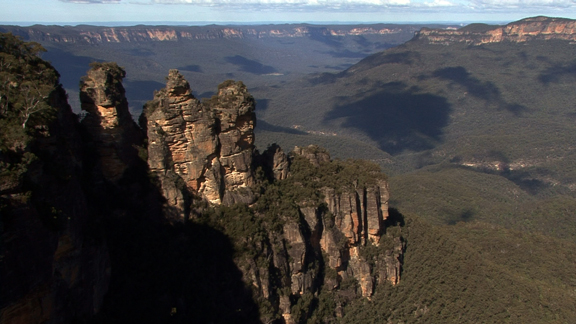
Detail: Echo Point, Katoomba, looking across to The Three Sisters.
The Three Sisters, one of the Blue Mountains' most famous sights, tower above the Jamison Valley. They were formed millennia
ago by erosion and will eventually vanish through a similar geological fate. A false Dreamtime legend was created in 1942 to
boost tourism in the area. It claimed that three sisters fell in love with three men from a neighbouring tribe, but marriage
was forbidden by tribal law. Battle ensued. The sisters were turned to stone by an elder to protect them, but the elder was
killed in the fighting and no one the else could turn them back to flesh.
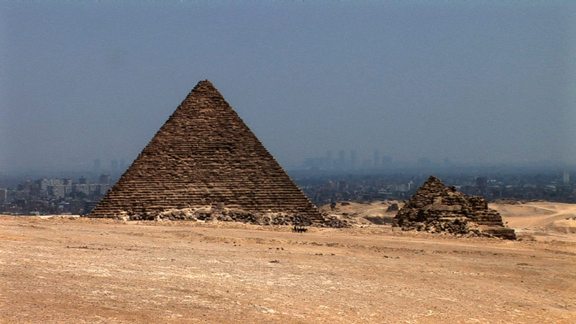
Detail: Menkaure's Pyramid, Giza, looking across to Cairo.
The smallest pyramid, the tomb of Menkaure, was built sometime during the 26th Century BC. According to legend, Menkaure
was a pious and beneficent king, in contrast to his two predecessors, Chephren and Cheops. In 1835, the remains of a wooden
anthropoid coffin inscribed with Menkaure's name and containing human bones were discovered in the upper antechamber of the
pyramid and removed. The coffin can now be viewed in the British Museum.
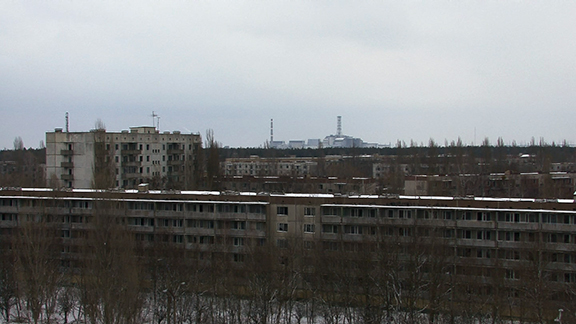
Detail: Pripyat, looking across to Reactor 4, Chernobyl.
The ruined Chernobyl nuclear facility still contains some 200 tons of radioactive fuel. A steel and concrete shell was built
soon after the disaster to contain the radiation. It is becoming increasingly unstable. A billion-dollar Safe Confinement
replacement is to be built on site, designed to enclose the existing sarcophagus for 100 years. Within the lifetime of the
new shelter, it is hoped that a way of dealing with the radioactive fuel and the breached reactor will be found.
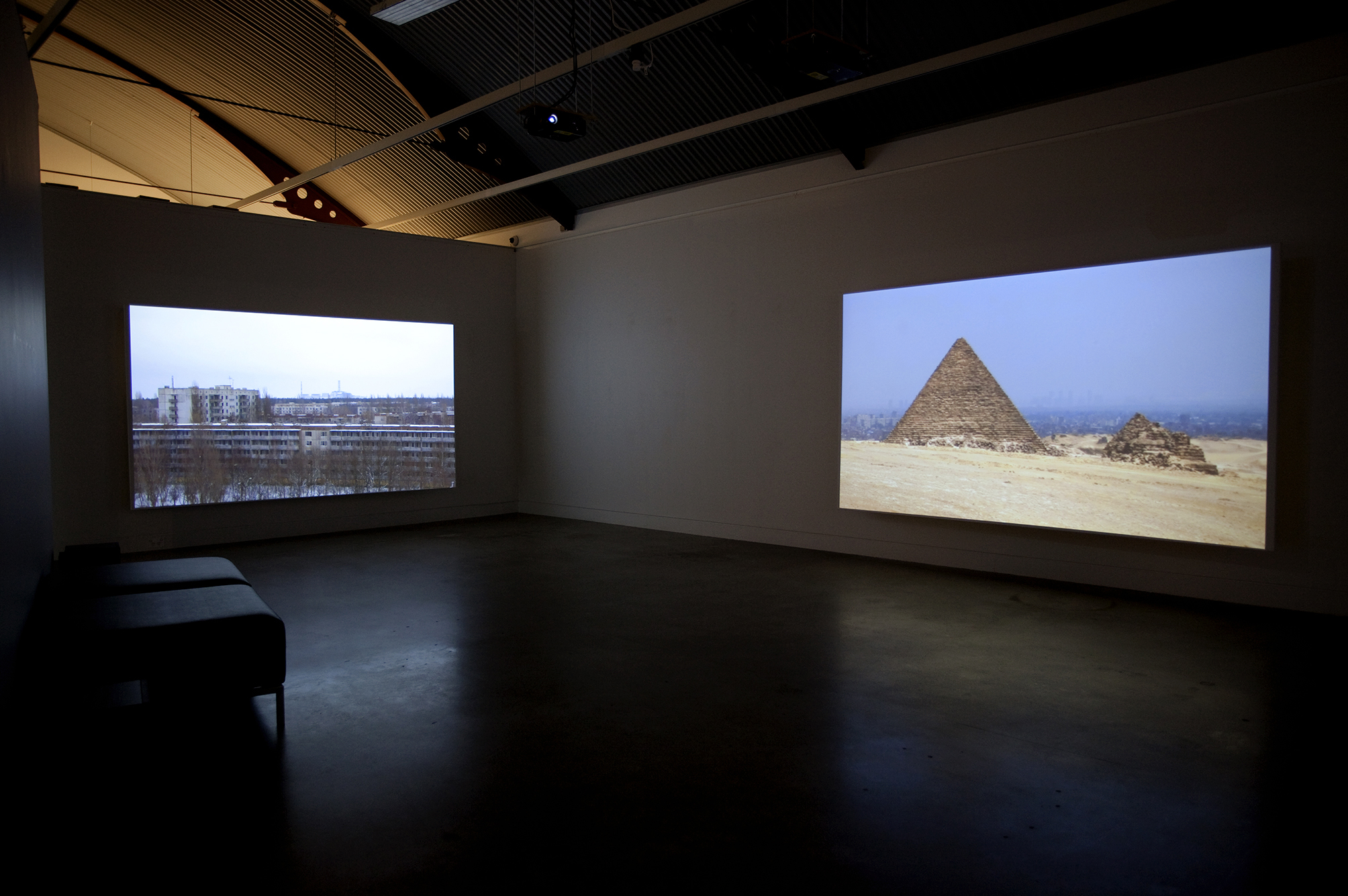
Detail: Fieldwork I. Detail, installation view.
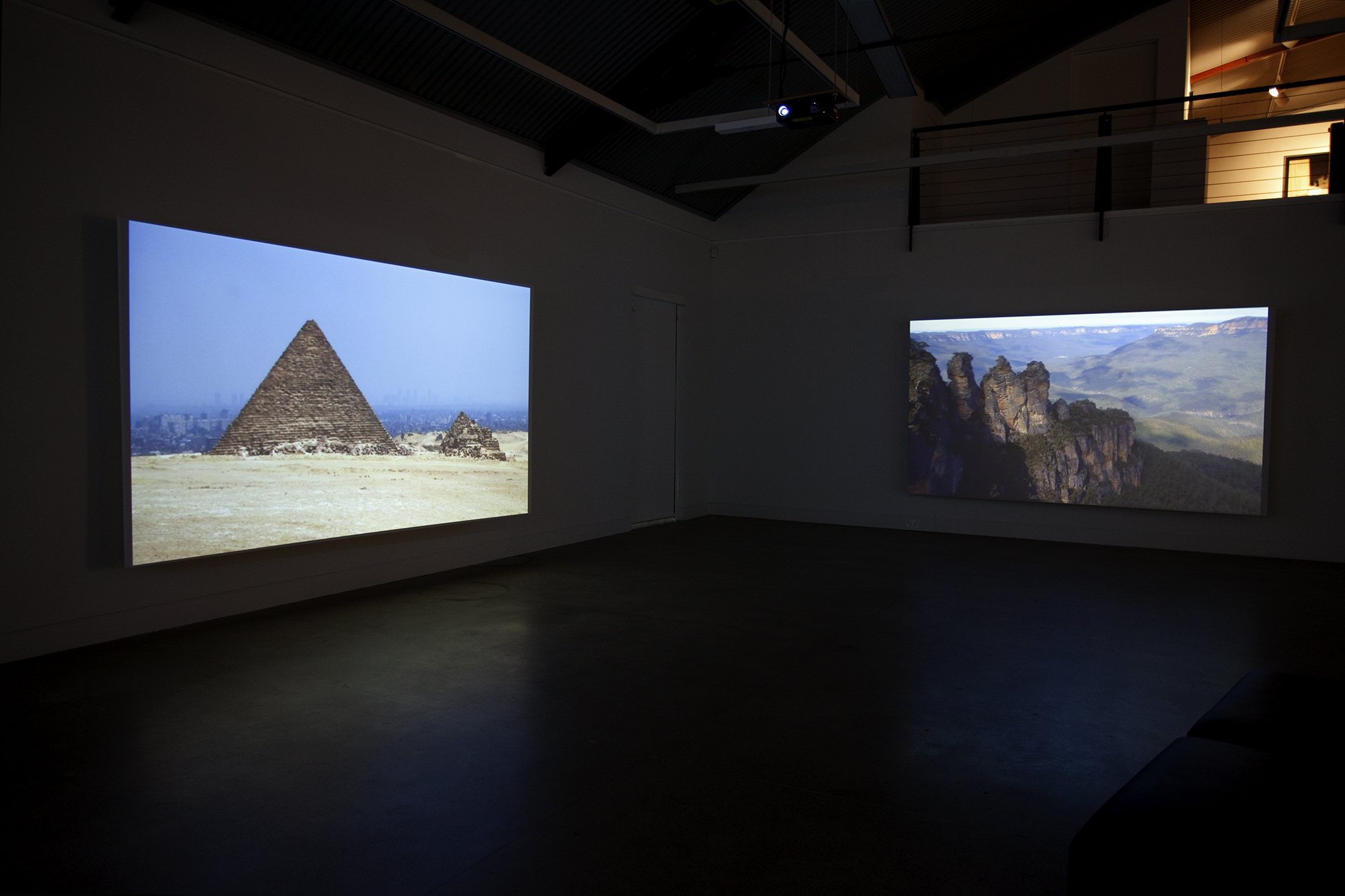
Detail: Fieldwork I. Detail, installation view.
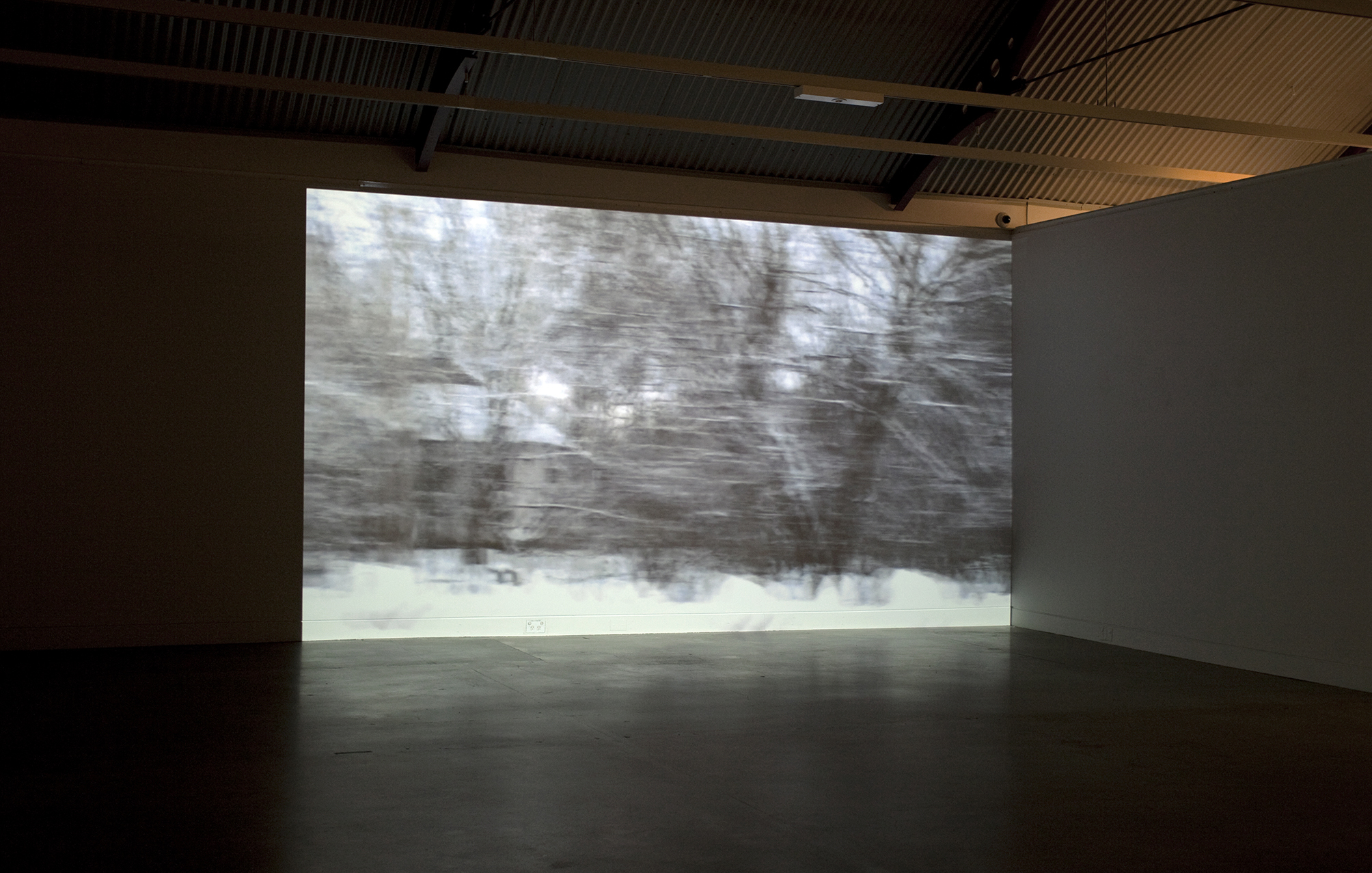
Detail: Fieldwork II. Detail, installation view.